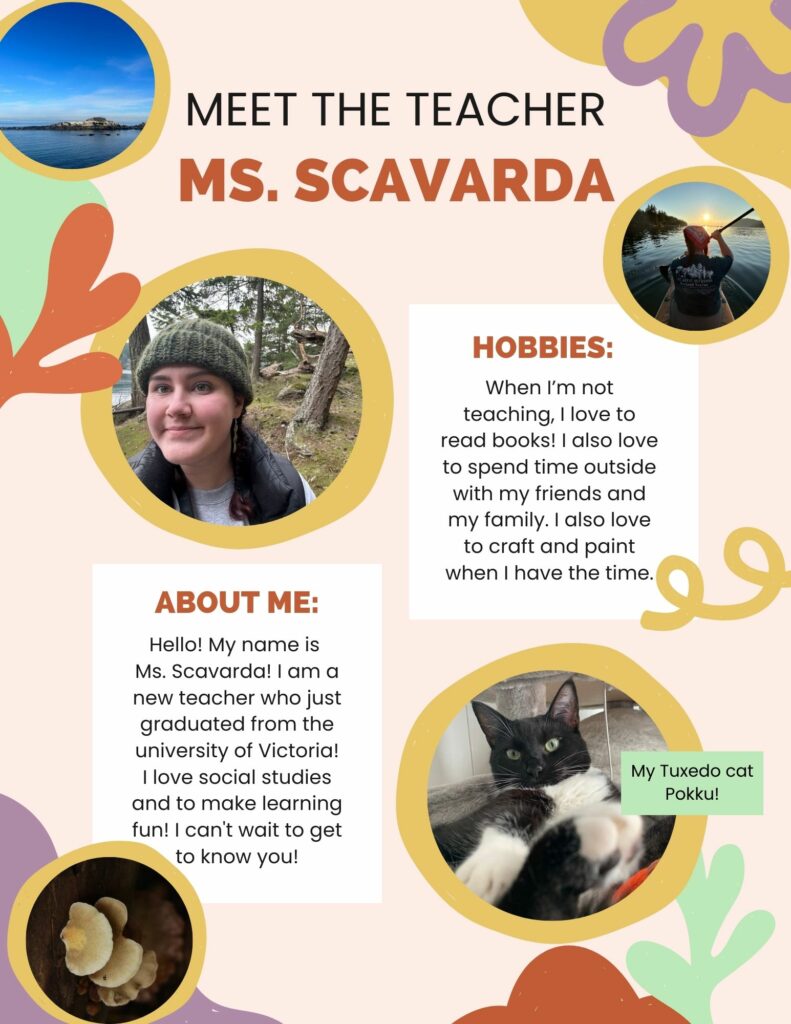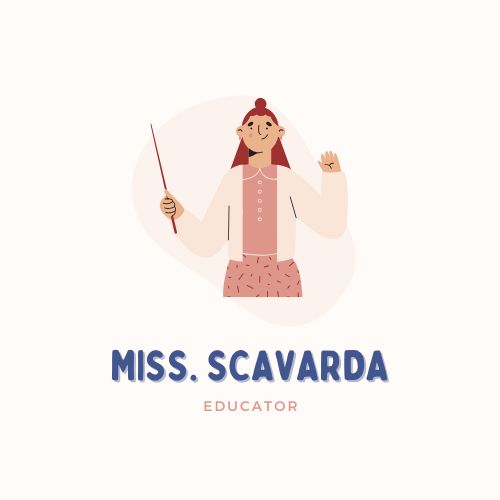This week, we were prompted to reflect on what the future holds. To begin, I explored how people in the 1950s-1980s envisioned the world of the 2000s.
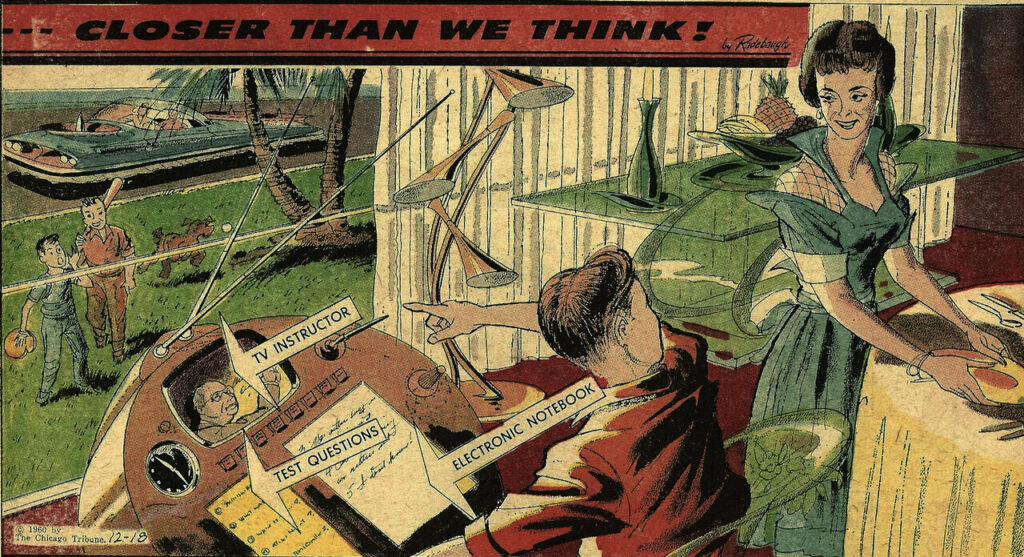
The image above comes from Arthur Radebaugh’s Closer Than We Think comic strip, published on December 18, 1960. It envisions a future where technology transforms education, potentially replacing traditional classrooms with home-schooling consoles. This vision feels particularly relevant today, as it echoes the reality of online learning during COVID, when platforms like Zoom turned homes into classrooms.
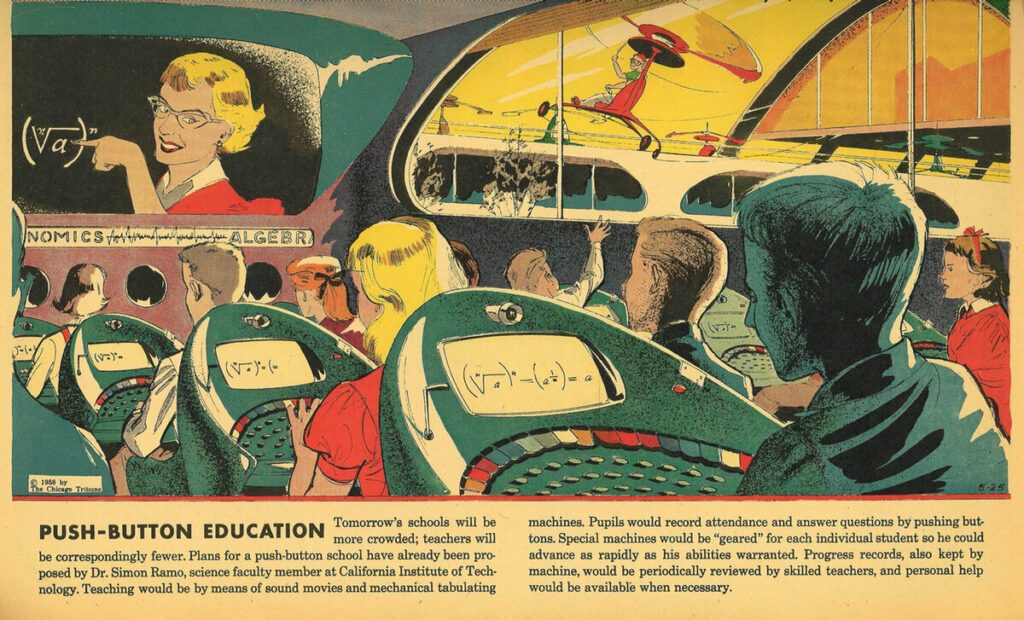
The image above comes from the May 25, 1958, edition of Arthur Radebaugh’s Sunday comic strip, Closer Than We Think, which envisioned a high-tech school of the future. This concept aligns with modern ideas of personalized learning, where students can progress at their own pace, accessing digital resources and lessons tailored to their needs.
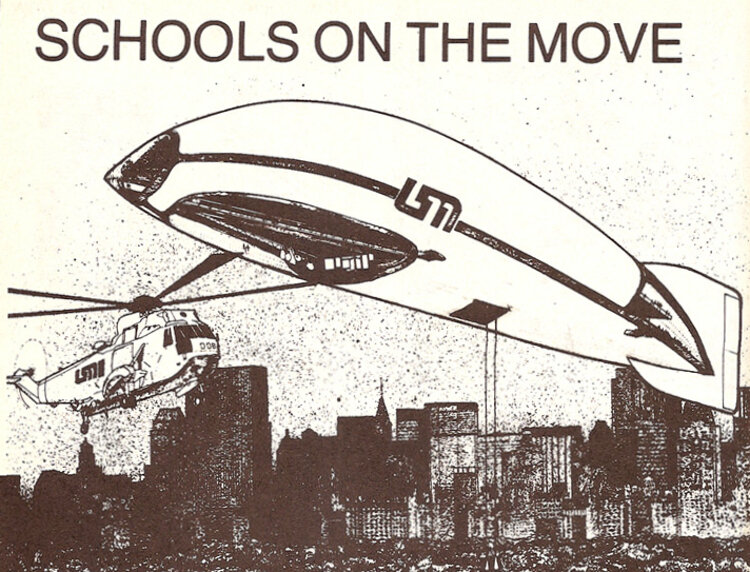
The 1982 book The Whole Kids’ Future Catalog promised children of the 1980s that floating schools would be the classrooms of tomorrow, allowing students to travel together and explore the world firsthand. While physical floating schools have yet to become mainstream, modern technology has made global learning more accessible than ever.
With tools like Zoom, Google Earth, and YouTube, education is no longer confined to four walls. Students can take virtual field trips to historical sites, explore distant ecosystems, and connect with classrooms across the globe—all from their own desks. The dream of learning beyond the classroom has, in many ways, become a reality, just in a different form than originally imagined.
My hopes for the worlds future
I hope the future will be one where we stay deeply connected—with each other and with the natural world. A future where we learn from one another, embracing diverse perspectives that enrich our shared experiences. I envision continued progress in truth and reconciliation, where understanding and healing flourish. It’s a future where we live in harmony, not only with each other but with the environment that sustains us. Above all, I hope it’s a future built on joy, love, and a sense of community that brings people together to create a more compassionate and sustainable world.
I asked Chatgpt to create an image of 2025 with these prompts:
- Staying connected—with each other and with nature
- Learning from one another and embracing diverse perspectives
- Continued progress in truth and reconciliation
- Living in harmony with both people and the natural world
- A future built on joy, love, and community

Overall, I really like this image and the idea of a future that could resemble it. While I don’t think our future will look exactly like this, the vision is peaceful and inspiring. I especially appreciate the emphasis on green spaces and the sense of community—it evokes a feeling of connection and harmony that I hope we can work toward, even if it’s not a perfect reflection of the future.
Challenges Ahead
I worry that the future may see a decline in human connection due to our increasing reliance on digital technology. While technology has brought many benefits, it often distances us from genuine face-to-face interactions, potentially leaving us feeling more isolated. I’m also concerned about the ongoing mental health crisis, which seems to be growing in intensity and affecting more people each day. The pressures of modern life, combined with social media, may exacerbate these challenges. Additionally, I fear that continued conflict and resource-driven greed will persist, creating more divisions between communities and nations.
I asked Chatgpt to create an image of 2025 with these prompts: Generate the year 2055 that reflects this: A decline in human connection due to digital reliance An ongoing mental health crisis Continued conflict and resource-driven greed.

I was really struck by this image because it closely resembles our world today. Now more than ever, people are constantly glued to their phones, often unaware of the people around them. There’s a noticeable lack of nature and green spaces, and instead, we see an overwhelming number of buildings.
The Future of Teaching
I envision a future in education where the integration of AI and virtual reality enhances learning experiences, making them more interactive and immersive. There will be a stronger focus on student-centered learning, where each student’s unique needs, interests, and strengths are prioritized. This shift will also bring greater inclusivity and accessibility, ensuring that all learners, regardless of their background or abilities, have equal opportunities to thrive. Additionally, I hope to see Indigenous knowledge and principles deeply embedded in the curriculum, fostering a more holistic understanding of the world and honouring the rich traditions and wisdom of Indigenous cultures.

Above is an image generated by ChatGPT, based on the description I provided earlier, has left me with mixed feelings. While I can appreciate the futuristic aspects of it, I’m not entirely sure how to feel about the heavy emphasis on virtual reality (VR). The intensity of the VR presence in the image feels somewhat overwhelming, and I’m not sure it fully aligns with my vision for classrooms. However, I can also see how this kind of technology might shape future classrooms, blending digital tools with traditional learning methods.







